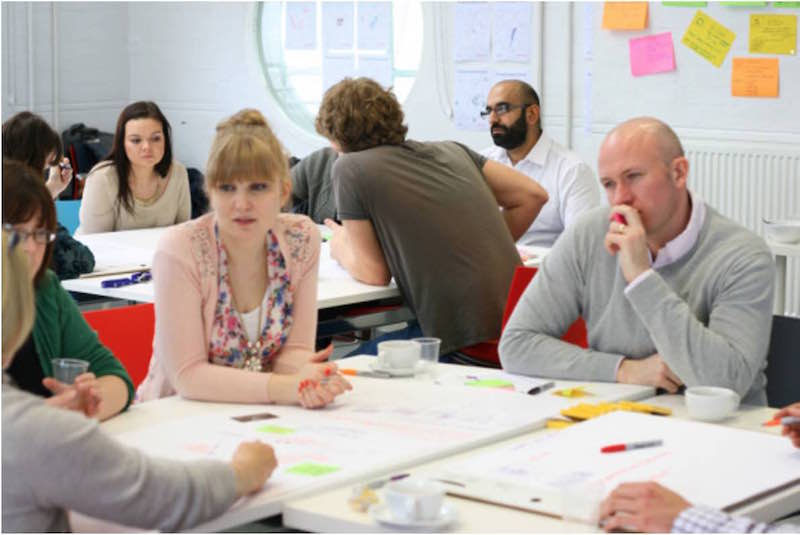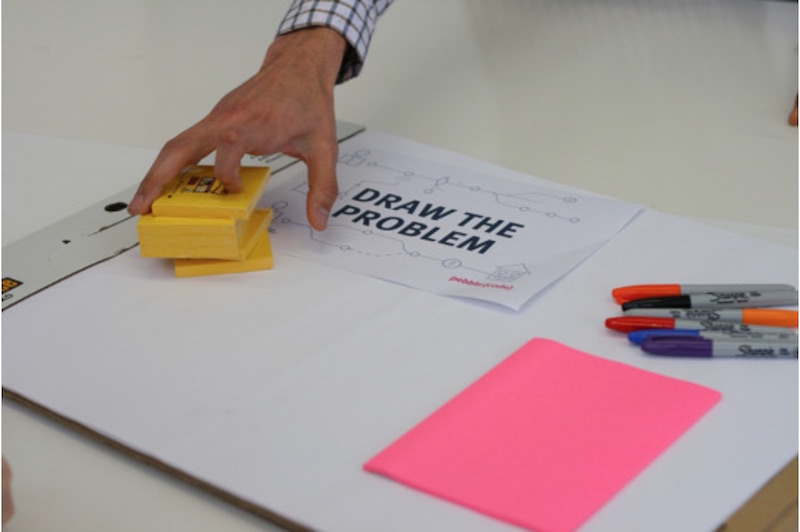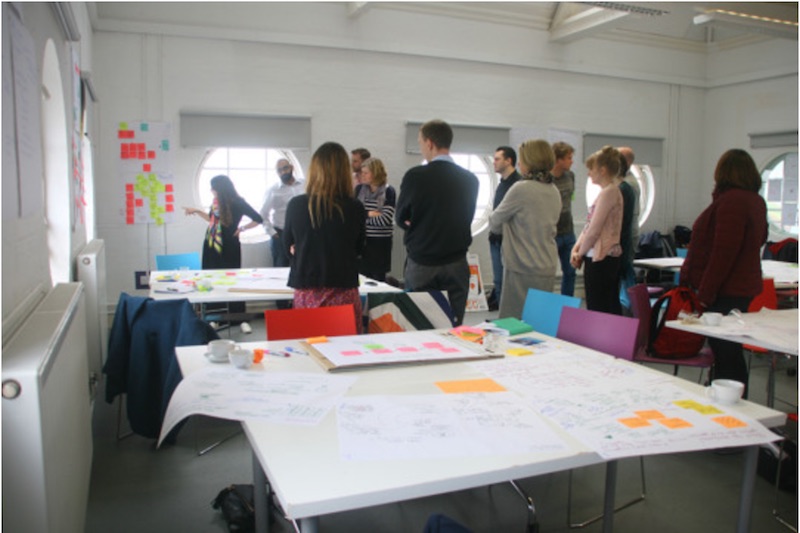The Power of Design Thinking
How do organisations become more innovative?
Many organisations are seeking to become more Innovative, Agile and Creative. A Design Thinking workshop is a practical way to get started with understanding how Innovation, Agility and Creativity can be fostered within even the most traditional of organisations.
Working together ¶
A Design Thinking Workshop allows an organisation to confront a single problem as a group. For the duration of the workshop traditional roles and hierarchies are set aside. Everyone has the common goal of working collaboratively on a single idea. At the end of the day groups present an idea back to their peers.
Creativity can come from anywhere. It could be the CEO who has a brilliant idea but equally transformative ideas have come from PAs, Office Cleaners and Interns. A well-facilitated Design Thinking workshop levels the playing field, and allows ideas to be assessed on their own merit. Part of the power of a Design Thinking Workshop is to allow an organisation to be exposed to this way of working.
How we run a Design Thinking workshop ¶
We have run full day and half day design thinking workshops. Here’s an example agenda.
- 0900 Introduction and aims
- 0915 Warm up
- 0930 Draw the problem
- 1015 Empathy mapping
- 1115 Put it to the test
- 1230 Summation and presentation of ideas
- 1300 Close
Introduction and aims ¶

Collaboration is strongly encouraged throughout the day.
The facilitator will introduce the purpose of the day and outline the types of activities that delegates will be undertaking. The goal here is to make delegates feel relaxed, that it is not a competition and that working together with colleagues and thinking creativity is the most important thing to consider.
Warm up ¶
A simple exercise to encourage ways of thinking. This may involve drawing or working collaboratively with post-it notes or on a whiteboard.
Draw the problem ¶

Draw The Problem’ is one of the techniques that may be used in the Workshop
Visualising a problem is a technique that offers two _ levers for creativity. It helps to perform a common reference for individuals discussing the problem. It provides a visual map of the problem allowing individuals to think about solutions from other angles.
We encourage delegates to stand up during this process and use whiteboards or large pieces of paper to sketch out the problem. This exercise also helps to identify the personas that will be assessed for the Empathy Mapping.
Empathy mapping ¶
Empathy mapping encourages delegates to think about the individual profiles within a domain. An example would be a milk delivery. In this domain there are the following personas
- Farmer
- Dairy Owner
- Lorry Driver
- Milkman
- Customer
If we were seeking to be innovative in this domain we would look to understand what each of these individuals is hearing, saying, seeing, doing, thinking and feeling. This is an excellent exercise to encourage delegates to understand the motivations of individuals involved in a process.
Put it to the test ¶
This involves taking an idea and having a series of constraints thrown at it. Teams must respond to questions like ‘You have to release a product tomorrow. What would you do?’ and ‘Design a billboard poster to advertise your product’. These exercises help shape an idea by introducing constraints. Delegates will understand what is really important to an idea by using these techniques.
Summation and presentation of ideas ¶

Teams share their work at the end of the session
Throughout the day it is strongly encouraged that groups work towards being able to share their idea with peers at the end of the day. It is not expected that all ideas will be fully formed but it is expected that delegates have something to show.
Each group will be asked to present their idea and work through how they arrived at the idea. Groups are encouraged to share what they learned about their assumptions and how constraints challenged their ideas. Groups are also encouraged to talk about what they would do next with the idea. Typically the delegates will split into tables of 6 with facilitators working practically to encourage the techniques being suggested.
Conclusion ¶
We believe that Design Thinking workshops are a _ lever to making an organisation more innovative and for approaching problems in novel ways. By working together in a collaborative ways organisations can explore the motivations of human actors in software and product design and learn a _ cultural level for innovation.
Tags
Can you help make this article better? You can edit it here and send me a pull request.
See Also
-
API design for an event-driven world
REST and HATEOAS are designed around request response cycles. New thinking is needed for bidirectional, event-driven, realtime APIs. -
Being a Parent and Working in Technology
Being a parent brings challenges to working as an engineer in Technology. In my experience with good software practices it can work. -
The commoditisation of hack days
Far from be a chance to play and experiment sponsored hack days heap pressure on creative developers willing to give their time for free.